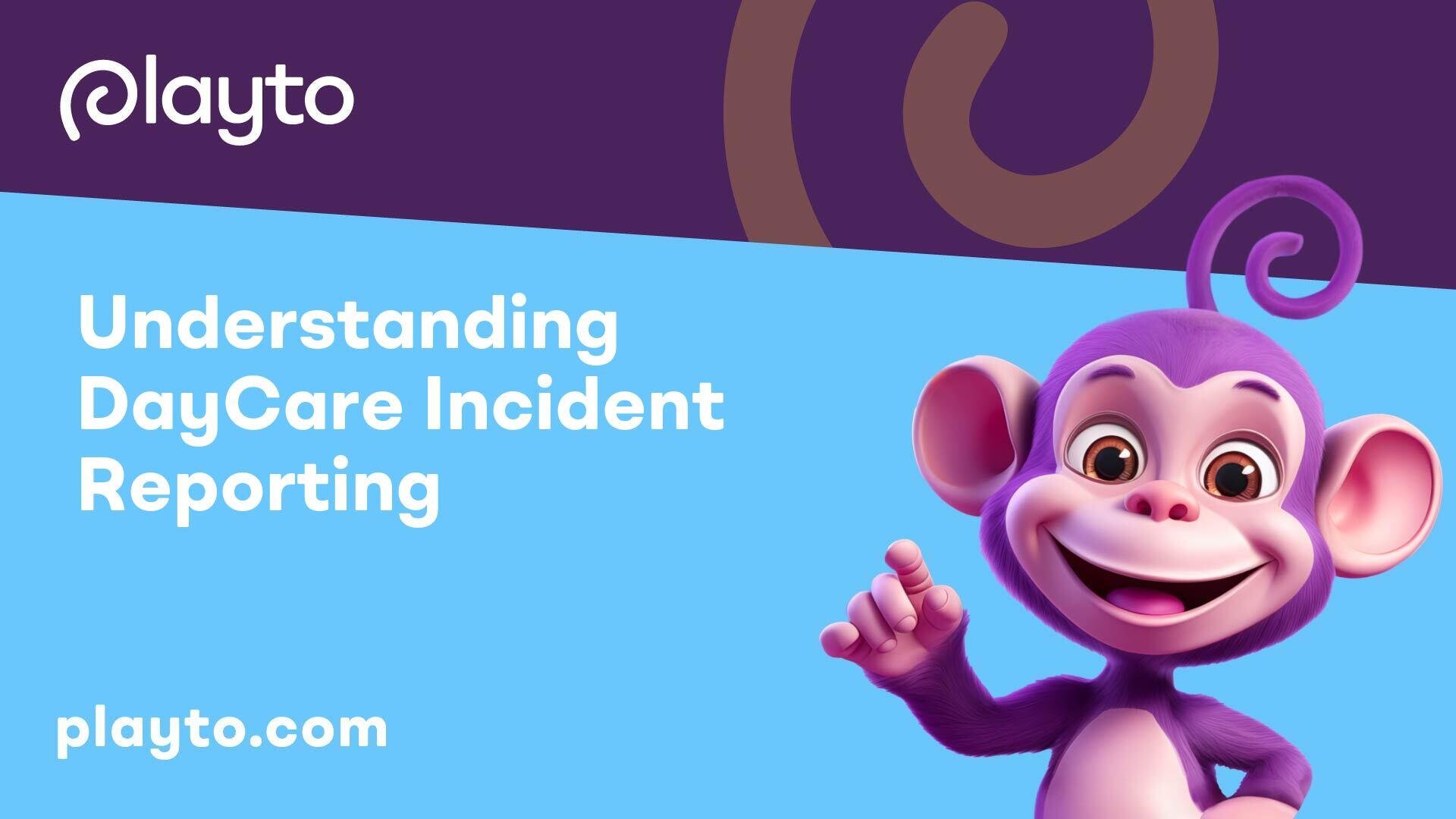
Importance of Daycare Incident Reporting
In the realm of childcare settings, the significance of incident reporting cannot be understated. These reports play a critical role in ensuring the safety and protection of children, fostering transparency, and upholding trust within the facility. The key aspects of incident reporting lie in its role in child safety and its significance for transparency.
Role in Child Safety
Daycare incident reports are essential tools that contribute to maintaining the safety and well-being of children within the childcare environment. By meticulously documenting accidents, injuries, unusual incidents, or neglect, these reports enable childcare providers to track trends, identify potential safety hazards, and implement preventive strategies [1].
The detailed nature of incident reports helps in preventing misunderstandings by providing a comprehensive account of what transpired, including the specific circumstances, timing, and witnesses involved in the incident [2]. This level of documentation not only ensures immediate action for the affected child but also serves as a foundation for continuous improvement in safety protocols within the daycare facility.
Significance for Transparency
Transparency is a cornerstone of effective daycare operations, and incident reporting is a key component in demonstrating this transparency. By openly documenting accidents, injuries, and any unusual incidents, daycare centers showcase their commitment to open communication and accountability.
Moreover, incident reports play a vital role in building trust among families, staff, and administrators. These reports showcase the center's dedication to child safety through proactive measures to prevent accidents and maintain a secure environment. The transparency facilitated by incident reporting not only strengthens relationships within the daycare community but also underscores the unwavering commitment to the well-being of every child in the facility.
Understanding the profound impact of incident reporting on child safety and transparency is fundamental for the effective and responsible management of the daycare environment. By prioritizing incident reporting practices, daycare facilities can create a culture of safety, trust, and accountability that resonates throughout their operations.

Analyzing Incident Reports
In the realm of childcare safety, analyzing incident reports is a crucial practice for daycare centers to ensure optimal care and risk management for the well-being of the children under their supervision.
Identifying Trends
By carefully examining incident reports over time, childcare providers can unearth valuable insights into recurring incidents and emerging patterns that may pose risks to the children under their care. This data-driven approach allows providers to identify trends, assess risks, and proactively address potential issues before they escalate. Understanding these trends is instrumental in enhancing overall risk management practices within daycare settings.
Implementing Risk Management
Upon identifying trends and potential risks from incident reports, daycare facilities can take proactive measures to implement targeted risk management strategies. This may include the reinforcement of safety protocols, introduction of additional safety measures, and conducting specialized training for staff members to enhance their ability to handle challenging situations effectively.
Furthermore, based on analyses of incident reports, daycare centers can develop tailored risk management plans that address specific areas of concern, such as preventing accidents, safely managing child behavior, and ensuring child protection from various forms of harm. Implementing these strategies not only mitigates risks but also fosters a safer environment for the children in their care.
In essence, analyzing incident reports serves as a proactive approach for childcare providers to enhance overall risk management practices, cultivate a culture of safety, and continuously improve the quality of care offered within daycare settings. By utilizing the insights gained from incident analysis, daycare facilities can prioritize child safety and well-being, ensuring a secure and nurturing environment for all children under their supervision.

Professional Development Through Reports
When it comes to understanding daycare incident reporting, incident reports play a crucial role in the continuous professional development of childcare staff. By documenting and analyzing these incidents, caregivers have the opportunity to learn from past occurrences, reflect on circumstances, and derive valuable insights to enhance their caregiving practices. This process not only benefits individual caregivers but also contributes to the overall safety and well-being of the children under their care.
Opportunities for Learning
Incident reports provide a platform for childcare staff to learn from both positive and challenging situations. By reviewing past incidents and the actions taken, caregivers can identify areas for improvement and implement strategies to prevent similar incidents in the future. This continuous learning process fosters a culture of growth and improvement within daycare settings, ultimately enhancing the quality of care provided to children.
Enhancing Caregiving Practices
Through the documentation and analysis of incident reports, childcare staff have the opportunity to enhance their caregiving practices. By identifying trends, root causes of incidents, and areas of concern, caregivers can implement targeted training programs, safety protocols, and risk management strategies to ensure the safety and well-being of children in their care. By proactively addressing potential risks and challenges, daycare facilities can maintain a safe and supportive environment for all children.
The reflective practice encouraged by incident reporting not only facilitates individual professional development but also strengthens the overall safety culture within daycare settings. By leveraging incident reports as valuable learning tools, childcare staff can continuously improve their skills, knowledge, and practices, leading to enhanced care and support for the children they serve. For more information on ensuring child privacy in daycare, please visit how our daycare protects child privacy.
Comprehensive Documentation
In the realm of daycare safety and policies, the comprehensive documentation of daycare incident reporting plays a pivotal role in ensuring compliance and safeguarding childcare programs against potential risks. The meticulous recording of incidents not only serves as a factual account of occurrences but also acts as a protective measure for childcare providers, adhering to state regulations and guidelines.
Ensuring Compliance
The importance of detailed incident reports cannot be overstated. They provide a thorough and objective record of situations that may range from one-off incidents to ongoing issues. By meticulously documenting each incident, childcare programs demonstrate their commitment to transparency and accountability. Moreover, this practice ensures compliance with the specific health and safety standards mandated by federal law for licensed childcare providers [1].
Maintaining accurate incident report records is crucial for future reference and potential legal purposes. By adhering to strict reporting protocols and regulations, daycare centers not only protect the children under their care but also shield themselves from potential liabilities related to inadequate incident documentation. In cases where incidents require reporting to authorities or guardians, detailed and compliant records are essential in conveying the necessary information promptly and accurately.
Protection of Childcare Programs
Thorough documentation in incident reports serves as a shield for childcare programs against potential risks and liabilities. In the event of any unforeseen incidents, having comprehensive records can provide a clear account of actions taken, individuals involved, and measures implemented to prevent reoccurrence. This documentation not only safeguards the well-being of children but also protects the reputation and integrity of the childcare facility.
By upholding stringent documentation standards, daycare centers demonstrate their commitment to maintaining a safe and secure environment for the children entrusted to their care. This level of accountability reinforces trust between caregivers, families, and regulatory bodies. It also underscores the dedication of childcare providers to upholding the highest standards of safety and excellence in childcare practices.
In conclusion, comprehensive documentation of daycare incidents is a cornerstone of effective risk management, regulatory compliance, and program protection. By prioritizing the meticulous recording of incidents, childcare programs not only fulfill their legal obligations but also establish a culture of transparency and accountability that is essential for promoting child safety and welfare.
Federal Regulations and Compliance
Understanding the importance of adhering to federal regulations and compliance standards is crucial for maintaining a safe and secure environment in daycare facilities. Licensed childcare providers are obligated to meet specific health and safety standards as mandated by federal law, with incident reporting requirements playing a key role in ensuring child welfare.
Mandated Standards
Federal law dictates that licensed childcare providers must comply with stringent health and safety standards and incident reporting guidelines. These standards are put in place to safeguard the well-being of children in daycare settings and to address any safety concerns promptly. Compliance with these mandated standards is essential to uphold the highest level of care and protection for the children entrusted to daycare facilities.
Varying State Requirements
While federal law establishes overarching guidelines for incident reporting in daycare centers, it's important to recognize that reporting and compliance regulations may vary from state to state. Each state has its own licensing authority responsible for overseeing the reporting of abuse or negligence in daycare incidents. Some states even provide specific incident report forms for childcare providers to ensure uniformity in reporting practices.
For instance, in Ohio, daycare centers are mandated to complete an incident/injury report promptly after specific events and deliver it to parents or caretakers on the same day it occurs. This exemplifies the importance of timely and transparent incident reporting to maintain accountability and transparency within daycare facilities.
By understanding and adhering to federal regulations and state-specific requirements related to incident reporting, childcare providers can uphold the highest standards of care, promote transparency, and prioritize the safety and well-being of the children under their supervision. Maintaining accurate incident report records is not only a regulatory obligation but also a fundamental aspect of ensuring accountability and effective risk management within daycare programs.
Common Daycare Incidents
Incidents in daycare settings can vary, but two prevalent concerns are falls and injuries. Understanding how these incidents are reported and managed is crucial for ensuring the safety and well-being of children.
Falls and Injuries
Falls are a significant risk in daycare settings, with approximately 8,000 children sent to the emergency room annually due to falls alone. Among nonfatal injuries, falls in children under the age of 1 account for 50% of incidents [2].
To address falls and injuries effectively, daycare providers must have clear protocols in place for incident reporting and immediate action. When a fall or injury occurs, timely reporting and communication with parents or guardians are essential. Ohio child care providers, for instance, are mandated to notify parents of injuries promptly by completing an incident/injury report and providing it on the same day the incident or injury takes place. This level of transparency and prompt reporting helps build trust between the daycare facility and families.
Reporting Requirements by Age
In daycare settings, specific reporting guidelines are in place to ensure that any incidents involving children are properly documented and communicated. An incident/injury report must be completed by child care staff in situations such as accidents, injuries requiring first aid treatment, head bumps, emergency transport, or events jeopardizing safety. This report should be shared with parents or guardians on the same day of the incident, or within twenty-four hours for emergency transportation cases.
Furthermore, incidents that pose risks or compromises to the safety of children or staff should be documented using specific forms like the JFS 01299 "Incident/Injury Report" and retained for at least one year. Regular reviews and assessments of daycare safety procedures are crucial to identify areas for improvement and ensure ongoing compliance with reporting regulations.
By understanding the common daycare incidents like falls and injuries, daycare providers can implement proactive measures to prevent such occurrences and effectively manage them when they do happen. Adhering to reporting requirements by age and following established protocols for incident documentation can promote a safe and secure environment for children in daycare settings.
Reporting Procedures and Timelines
When it comes to understanding daycare incident reporting, proper procedures and timely documentation are essential for maintaining the safety and well-being of children in daycare settings. In this section, we delve into the steps involved in completing incident reports and the guidelines for the retention and storage of these critical documents.
Completing Incident Reports
Daycare incident reports play a crucial role in ensuring transparent communication between caregivers and parents/legal guardians regarding the health and safety of children under their care. These reports need to be comprehensive, providing a detailed and objective record of any incidents that occur, whether they are one-off occurrences or recurring issues [1].
It is imperative that a daycare incident report is completed within a specific timeframe. According to Vanco Payments, these reports should be filled out within 24 hours of the incident. The prompt completion of incident reports allows for immediate action to be taken and ensures that parents or legal guardians are informed about any incidents that may impact their children's well-being.
Incident reports should cover various scenarios, including illnesses, accidents, injuries requiring first aid treatment, bumps or blows to the head, emergency transporting, or events endangering the safety of children or staff. It is crucial that these reports are shared with the relevant parties, such as parents, guardians, or individuals picking up the child, on the same day of the incident or within 24 hours, especially in emergency transportation cases.
Retention and Storage Guidelines
After completing incident reports, daycare centers must adhere to specific retention and storage guidelines to ensure compliance with state regulations and directives. Incidents that include a child leaving the center unattended or any unforeseen events compromising safety must be documented using the JFS 01299 "Incident/Injury Report" form. These reports should be retained at the center for at least one year and made available for review by the director's representative [4].
In situations involving a child's death at the center, serious incidents, injuries, illnesses, or unexpected events posing a risk to child safety, the center administrator must notify the appropriate licensing office within specified timeframes. It is crucial to submit a written notification using the JFS 01299 form within three business days of the occurrence to ensure transparency and regulatory compliance.
By following stringent reporting procedures and adhering to retention and storage guidelines, daycare centers can uphold accountability, protect childcare programs, and prioritize the safety and well-being of the children under their care.
Incident Reporting in Head Start Programs
In Head Start programs, incident reporting plays a critical role in ensuring the health and safety of program participants. According to the Head Start Program Performance Standards (HSPPS) at 45 CFR §1302.102(d)(1)(ii), Head Start programs are mandated to report significant incidents affecting the well-being of participants. This includes incidents related to staff or volunteer compliance with laws addressing child abuse and neglect. All incidents must be reported to the responsible U.S. Department of Health and Human Services (HHS) official either immediately or within seven calendar days of the occurrence.
Significant Incidents Reporting
Key incidents that must be reported in Head Start programs encompass a range of issues impacting child safety and well-being. These may include instances of alleged sexual abuse, extreme disciplinary measures such as binding or tying children, and incidents involving physical or corporal punishment. Reporting these significant incidents is essential to ensure that appropriate measures are taken to address any potential risks to the children under the program's care.
Reporting Obligations to Authorities
Proper and timely reporting of incidents to the relevant authorities is crucial in maintaining transparency and accountability within Head Start programs. Incidents involving Head Start staff, contractors, volunteers, and children must be reported promptly and within seven calendar days, regardless of severity or the outcome of any investigations. Failure to report incidents in a timely manner may result in monitoring findings and deficiencies for the programs.
It is imperative to note that the well-being of staff members also plays a vital role in child safety within Head Start programs. Establishing a work environment that supports staff wellness and addresses potential stressors can enhance self-regulation in adults. This, in turn, can contribute to more effective management of children's behaviors and mitigate the occurrence of incidents within the program.
By adhering to the reporting guidelines set forth by the HSPPS and promptly reporting significant incidents, Head Start programs can uphold their commitment to child safety and create a secure and nurturing environment for all participants. Maintaining transparency and accountability through incident reporting is fundamental in promoting a culture of safety and well-being within Head Start programs.
References
[2]:
[3]:
[4]:
